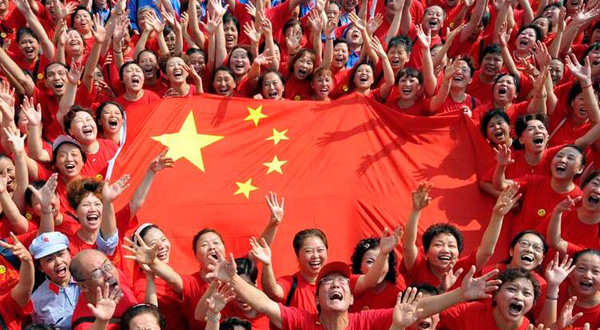Now - 12:27:08
Conflicts in organizations: types, causes, resolution methods
An Integral part of active and productive work in the organization - conflicts. This phenomenon should not be taken purely negatively. The most important is the ability of the leader to manage conflict situations and to draw the right conclusions to avoid them in the future.

Classification of conflicts
Before you proceed with dispute resolution, select the typology. Thus, the principal conflicts in the organization are given in the table:
| Sign | Types of conflicts | Description |
| The value for the organization | Constructive | Opponents do not go beyond the ethical norms, and as a result develop measures to improve efficiency. |
| Destructive | None of the parties does not compromise, violates the rules of morality. As a result, the problem remains unsolved, and the work efficiency is reduced. | |
| Direction | Horizontal | Involved persons are at the same level in the organization. |
| Vertical | Involved that have established the relationship "Manager-subordinate". | |
| Mixed | Provides both horizontal and vertical lines of the relationship. | |
| Openness | Open | Visible to the naked eye. |
| Hidden | Hidden from the observer and are recognized by such signs as tension, attitude to work and so on. | |
| Resolution | Business | Relate directly to the workflow. |
| Personal-emotional | Arise on a background of personal animosity or emotional condition of the parties. | |
| With respect to entities | Intrapersonal | Because of the internal struggle of one person, there is a General tension. Usually, the cause is the conflict of interest of the individual to the goals of the organization. |
| Interpersonal | Occurs because of a conflict of interests or points of view of two or more members of the organization. | |
| Between the individual and the group | Occurs when an individual takes a position opposite to the collective. | |
| Intergroup | Occurs due to the lack of coherence between departments. Also, the cause may be a struggle for resources. | |
| For reasons | Goals | The parties to the conflict have different opinions of the desired state of the organization. |
| Cognition | The parties to the conflict have different ideas about the nature of the problem being solved. | |
| Sensitive | The same problem is causing the conflict parties of different emotional perception. |
Objective causes of conflict
The Causes of conflict in organizations, as a rule, directly related to the production process. In this case we are talking about objective factors.
| Factors | Causes of conflict |
| Management | - the imperfect organizational structure; - fuzzy description of the rights and duties of employees; - the disparity of rights, duties and responsibilities; - the contradiction between the functional responsibilities and actual requirements. |
| Organizational | - a poor work organization; - violation of the regime of work and rest; - low level of discipline; - the excessive workload of the staff; - the lack of specificity in the formulation of the tasks; - the lack of transparency. |
| Professional | - lack of professionalism of the management and subordinates; - the imperfect system of selection and placement of staff; - lack of prospects for professional growth. |
| Sanitary | - poor working conditions; - failure to follow safety procedures. |
| Logistics | - lack of maintenance of equipment and other means of labour; obsolete. |
| Economic | - the imperfect system of payment of labour; - the opacity of the bonus system; - the irregularity of payment. |
Subjective causes of conflict
When the causes of conflict in organizations not directly related to the production process, and are of a personal nature, we are talking about subjective factors. Principal among them are:
- Rough handling;
- Arrogant attitude;
- Imposing opinions;
- Failure to fulfill obligations;
- Intolerance to criticism;
- Flattery and kowtowing to the user;
- Insensitive critique;
- Unfair distribution of social benefits;
- Concealment of vital information;
- Personal animosity;
- A conflict of interest;
- Incompatibility of temperaments;
- Etc.

Development Stage
Conflict in the organization passes through several stages of development. That's what it is:
- Hidden stage. A contradictory situation in which stakeholders form her certain looks in the opposite direction.
- The stage of tension. Opponents are beginning to Express theirposition or to demonstrate dissatisfaction with the status quo. As a result there is a contradiction.
- The stage of antagonism. Opponents of the move to an open confrontation.
- The stage of extinction. After the peak point of the standoff is beginning to wane.
- The stage of exhaustion. The conflict is resolved or loses its significance.
The Strategy of conflict management
Managing conflict in organizations is one of the main functions of an effective Manager. It can be implemented in accordance with one of the three strategies:
Recommended
Staff evaluation: system and methods
Personnel Assessment allows you to identify how competent the employees involved in the enterprise, and it is the performance of their work – the most significant factor affecting the efficiency of the company. To clarify the impact of performa...
How to start your own business: important aspects.
Many people, tired of working for someone else, are increasingly thinking about how to start your own business. Someone wants to open a salon, someone store, and someone enough and vegetable stalls. Before you throw in the pool with his head, it is i...
Business activities. its essence and basic functions
The Entrepreneurial activity of the citizen – is undertaken at your own risk and independent activity, which aims to systematically profit through the sale of works, goods, services, use of the property. The citizen engaged in such activities, ...
- Normative (moral and legal) strategy involves an appeal to the laws and norms of behavior accepted in society or particular organization. Moreover, a successful application will depend on how the employees shall support and comply with these standards. Otherwise, the leader may resort to the imposition of laws and regulations the conflicting parties.
- A Realistic strategy based on the perception of conflict in organizations as an inevitable phenomenon associated with the tendency of some individuals to dominate and to possess a large number of resources. In this regard, it is reasonable to rely on a truce and a temporary extinction of the confrontation.
- The Idealistic conflict resolution strategy in the organisation aims to find new values to replace the old, which became a source of confrontation. As a result, benefit all the warring parties.

The Process of conflict management
Managing conflict in organizations is a complex process which involves the following stages:
- Conquest authority. A leader needs to inspire confidence and respect from all parties to the conflict. The way to resolve the conflicts in the organization will be much easier, because the opposing sides will get a reputable consultant, who will set a constructive direction for cooperation. It is important that the participants felt the need to resolve the dispute.
- Determination of the structure of interpersonal contacts. The Manager must have a clear understanding of formal and informal relationships between the participants of the confrontation. Establishing direct contact with the leaders, he will be able through them to set the direction of conflict resolution in organizations.
- Maintaining equilibrium between the opposing sides. You need to set the symmetry in the position of the parties to the conflict that they were equal. This will give way to a constructive solution.
- Maintaining the optimum degree of intensity of the conflict. If the intensity is high, the confrontation gets out of control. At the same time, the extinction of the conflict leads to loss of interest. Reasonable tension supports the interest in finding a compromise that will suit everyone and will benefit the organization.
- Discussion of the conflict. When the dust settled, it is necessary to organize dialogue between the opposition parties with the purpose of deep analysis of the situation, determine the causes and possible ways out of it.
- The Definition of compromise solutions. Task Manager - to develop a detailed procedure defining the tasks and roles of opposition parties, as well as results that will satisfy everyone. It is important to organize the negotiation process so to avoid any new reasons for conflict.
- Control of the entire process of dispute resolution.
Basic methods of conflict resolution in organizations
Conflict is an inevitable problem of any workforce. In this case, it is important that the supervisor knew about the ways out of this situation. For this he need to adopt common methods. Conflicts in the organization resolved as:
- Avoidance (evasion). This method implies that the leader prefers to ignore the conflict and not intervene in them.
- Coercion. The actions of the head are intended to suppress the conflict through its authority and methods of administrative influence on subordinates.
- Anti-Aliasing. The main purpose of the head to restore normal relations and a positive atmosphere in the team. While the subject matter of the conflict are not given sufficient attention.
- Compromise. The leader seeks to bring conflicting parties to the point of which is equally acceptable to everyone.
- The solution to the problem. The head gets to the essence of the conflict, trying to eliminate the causes and to prevent similar situations in the future.

The Consequences of conflicts
It would be wrong to perceive the conflict in the organization exclusively as a negative phenomenon. The conflict may have both positive and negative consequences. They are given in the table.
| Positive impact | Negative consequences |
| - the détente between the warring parties; - going up to surface previously hidden information, that allows to avoid occurrence of similar situations in the future; - the team becomes more cohesive if the causes of conflict - external factors; -subordinates rid of the "syndrome of obedience"; - in the team developing "industrial democracy"; - the situation encourages employees to self-improvement and development. | - the confrontation is accompanied by substantial emotional stress and financial cost; after destructive conflict can get out of order discipline in the team and even worsen the emotional background - the possible dismissal of employees; - the establishment of destructive informal relations in the team; - the formation of negative attitude to the "losing" party; the conflict comes to the fore, to the detriment of the worker process. |
Prevention of conflicts in organizations
It is Always easier to prevent a problem than to deal with its consequences. Therefore, every effective leader needs to pay due attention to the prevention of conflicts between employees. To prevent social conflicts in the organizations is as follows:
- Continuous monitoring of the relationship between employees to timely detect pre-conflict situations.
- Creation of the most favourable and equitable conditions for staff to achieve their duties.
- Equitable distribution of material resources in compliance with the principle of transparency and openness.
- The Elimination of socio-psychological tension by competent placement of personnel in posts and units.
- Statement of integrating objectives, which serve as a consolidating factor between equal employees, and between employees and managers.
- Creation and approval mechanism for the resolution of pre-conflict situations in different areas, as well as spreading it to all employees.
- Attract potential instigators of conflict to a controlled joint activities.
- Development in employees feelings of empathy and desire to help each other.
- An Exception any discrimination against employees.
- Developing a long-term strategy of the organization, is not less than decade, which should cooperate employees.
- The creation of a mechanism through which employees can take the initiative and implement innovative ideas.
- Maximum simplification of the organizational structure for getting rid of complex hierarchical structures.
- Regular activities for developing team spirit.

Difficulties prevention
Prevention of conflicts of interest in organizations is a complex and not always successful activities. And all because in the process of implementing preventive measures a Manager is bound to face a number of difficulties. Now which ones deserve the most attention:
- Overwhelming desire of the individual to independence. The freedom of the individual will negatively perceive any limitation and attempts to regulate interpersonal relationships.
- The Existence of moral generally accepted norms of interpersonal communication. If preventive measures are contrary to them, employees will oppose their implementation.
- Contradiction to legal norms. If preventive measures are in conflict with the regulations, they may be negatively perceived by the team.
Example 1
Controversial situation and the confrontation between employees can take place in any sphere of public activity. For example, it is necessary to highlight conflicts in educational organizations. Imagine the situation that at the beginning of the school year is the distribution of academic load, which affects the wage. Naturally, the highest number of hours receives an experienced teacher with lots of experience and a degree. Naturally, this situation causes dissatisfaction among young proactive specialist.
To avoid tension in the team and to prevent enmity, Director of the educational institution may make the decision on redistribution of the academic load next semester. Experienced specialist must act as a mentor for their novice colleagues.

Example 2
To understand the emergence and resolution of conflict situations in practice, it is worth considering an example of the conflict in international organizations. Head of the Department revealed shortage of cash and were quick to blame the sales Manager. But a thorough check revealed that the head of Department made a mistake in the formation of accounting documentation. Of course, the Manager, which has already been deducted the fine, protested, and was supported by other Junior staff.
In this situation, the head wisely. He showed employees that the organization all of equal treatment irrespective of their position in the management hierarchy. In the result, the injured Manager was reimbursed the amount of the fine and additional-paid amount to offset damages. Prochitavshemu the division supervisor was reprimanded and fined.

Example # 3
The Following is an example of conflict in organization for enterprise for the production of automotive parts. From the factory to the warehouse was transferred to the batch of finished product. Warehouse formally reacted to the acceptance procedure, and later it turned out that some parts have mechanical damage. Naturally, he sued the production plant of the complaints about the fact that it is the result of marriage or unscrupulous transportation. In turn, the production Manager blamed the presence of the defect of improper storage.
Director first appointed examination of the deformed parts, to determine the nature of the damage. Also was assigned to review the production and storage facilities for compliance with standards. Also, steps were taken to establish operative communication between departments, and carried out explanatory work on the rules of transfer and acceptance of finished products.
Example # 4
Head of branch network shop selling cosmetics makes the seller with the indication that the latter were closely with clients and provided them with a full consultation. A few days later the boss makes a comment to a subordinate that the latter is too much time spent on buyers and does not engage the balance of goods. The confused seller asks clarification from the Director of the network.
A Leader conducts an interview with the head of the branch. In result it turns out that the seller is a relative of the man whose head had previously been a serious conflict. Director of the network decides to transfer the head to work in another branch, where there is a vacancy in a similar position. Thus, the impact of the conflict on the work shop has been eliminated.
Article in other languages:
BE: https://tostpost.com/be/b-znes/16174-kanfl-kty-argan-zacy-v-dy-prychyny-metady-dazvolu.html
KK: https://tostpost.com/kk/biznes/16172-a-ty-ystar-t-rler-sebepter-d-ster-r-sat.html
TR: https://tostpost.com/tr/business/16177-at-malar-kurulu-t-rleri-nedenleri-z-m-y-ntemleri.html
UK: https://tostpost.com/uk/b-znes/16165-konfl-kti-v-organ-zac-vidi-prichini-metodi-vir-shennya.html

Alin Trodden - author of the article, editor
"Hi, I'm Alin Trodden. I write texts, read books, and look for impressions. And I'm not bad at telling you about it. I am always happy to participate in interesting projects."
Related News
Refrigeration oil: General information
To prolong the service life of the refrigeration equipment uses different tools. With them we can decrease the wear of friction elements and to reduce the force of friction parts. For this purpose, the refrigeration oil. Lubricati...
Depleted uranium: the description, characteristics and application
referred to as Depleted uranium, consisting primarily of the isotope U-238. It was first manufactured in 1940 in the United States. This is a material by-product of enrichment of natural uranium in the manufacture of nuclear fuel ...
Safety explosion vent: purpose, installation
Boiler equipment, whether it be a boiler in a private house or a large boiler at the plant is a source of danger. Under constant pressure from the water jacket of the boiler, potentially explosive. For safety, manufactured in our...
How to make a commercial offer of cooperation
the Activity of doing business today largely determines the success of a company. And literacy in the organization of all this work, in turn, is largely influenced not only by the actual economic indicators, but also determines a ...
How to choose the cutting machine for metal? Overview of cutting machines for metal
Cutting machines are made with motors of different power. Directly metal cutting is carried out thanks to a special abrasive circle. Today on the market models statin and table modification.depending on the size of the working sur...
The analysis of the production costs
the Cost can be defined as the costs of the enterprise for the production of a product. The technological process of production of even the simplest of products, usually requires the various expenses. In addition to the raw materi...






















Comments (0)
This article has no comment, be the first!